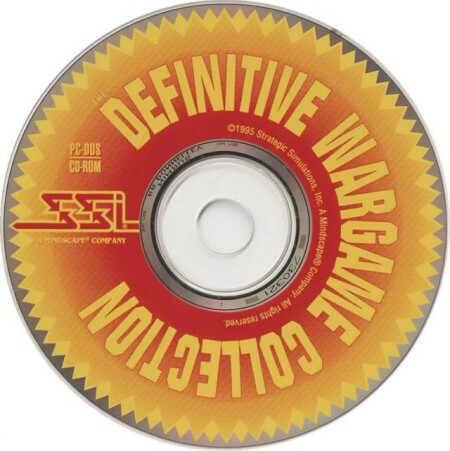
Actual Game
DEFINITIVE WARGAME COLLCTION
|
The Games
This is a fantastic collection from three of the premier wargame software houses from the mid 80s to mid 90s, namely, SSI. SSG and Impressions. As you will see the twelve games included in the collection touch on virtually the entire history of warfare from AD 1600 through Korea. The styles of the various games are as rich and diverse and the periods of history they cover. Taken as software, this collection accurately portrays the state of computerized wargaming from the formative years of the PC until just before the release of Windows 95. In other words, this collection represents classic gaming. Here follows a brief description of every title included in the Definitive Wargame Collection.
Decisive Battles in American Civil War (SSG 1989, 1990, 1992)
Volumes I - III
Decisive Battles in American Civil War games were an early attempt by SSG to offer an accurate portrayal of a war pushed back into the limelight many years later with Sid Meier's Gettysburg. Even if Decisive Battles does not have impressive 3D graphics and sounds, the collection is still a solid campaign that accurately reconstructs the most crucial battles of the American Civil War. The underlying engine is basically the same throughout the series, with improvements to the graphics and interface in each volume, which gives a feel of familiarity to gamers. The AI is an evolved version of SSG's celebrated Battlefront system. The system works well in this context in that you can select every single unit or entire groups of units under the command of a leader.
As you might expect, leaders are particularly important for the resolution of the battle. The simulation takes into consideration the effects of terrain and weather, and the ability of each leader is either enhanced or penalized based on his current situation.
Gold of the Americas (SSG 1989)
One of the few SSG classics that are not based on World War II, Gold of the Americas is an excellent strategy/conquest game set in the Americas. Unlike better-known games of this gene (e.g. Sid Meier's Colonization, Pirates!), Gold emphasizes strategic-level decisions and diplomacy over tactical-level colony management.
The gameworld consists of North and South America, divided into 31 land and 4 sea areas. There are 7 types of units to choose from (Armies, Colonists, Trading Ships, Warships, Privateers, Slaves and Explorers), all of whom are crucial to success. You play one of the European powers vying to control the New World: Spain, Portugal, England and France. Your mission, in game terms, is to end the game with the highest amount of Victory Points (VPs) at the end of 30 turns (equivalent to 300 years); at the end, you get 1 VP for every colony level you have.
Being a strategic-level game, there is no movement of units as such in Gold: everything is "placed" on the map. Ships stay at sea unless they are moved, and all armies and warships only last 1 turn (10 years), so there is no way to build up a huge fleet or invasion force -- all your decisions must be made in the context of the current turn, and how to maximize the use of these transient units. Trading is simple: you just place your trade ships in any sea area you wish, and hope that your competitors don't sink them or Privateers don't loot them.
The hallmark of Gold which makes it much more historically accurate than other Colonial-era games, is the taxation module. True to history, you have two coffers in the game: the main Treasury and your Secret Funds. Taxation is assessed as a percentage of your previous turn's earnings (which goes directly into Treasury). The failure to meet your tax bill results in less interest from the King, which in turn results in less resources you receive from him (armies, etc.) Trading, raids and exploration all have the potential to add funds to your Secret Fund, which you can use for whatever you want. If you let it build up too high, you will rouse suspicion form the motherland, which might mean a visit from the King's Auditing Department. Needless to say, careful management and allocation of the two coffers are crucial to winning the game with high VPs.
Overall, Gold is a great strategy game that is both historically accurate and addictive. Perfect for fans of SSI's No Greater Glory, and SSG fans in general. SSG's famous AI does not disappoint; it is one of the best AIs you'll find in this type of game, bar none.
Battlefront (SSG 1986 - 1995)
Panzer Battles
Rommel
Halls of Montezuma
MacArthur's War
For those not familiar with it, Battlefront is an operational level system that had been around for 10 years. The first games in the series were for the Commodore 64 and Apple II followed by the IBM and then the Mac. The best feature of the Battlefront series is that the user issues action orders (assault, defend, reserve, etc.) to groups of units but does not actually control each unit. While the unwanted actions of individual units can be maddening, I think the system accurately reflects command and control (or lack thereof) in World War II battles. The interface also made large battles easier to manage since the players weren't controlling each unit on a hex by hex basis.
The objective of each game in the series is to obtain the highest number of victory points. This is done by capturing objectives, destroying enemy battalions, while preventing the destruction of your own battalions. In addition you are the commander of all units and all this entails. That means there is the uncertainty of command separation. You truly have little direct control over the location of battalions. Based on your orders, they will position as themselves as best they can. Also, as the commander you are responsible not only for combat but also supply and management of resources. You need to stay aware of unit losses, supply and administrative levels of each regiment and act accordingly.
Combat takes into account a wide array of realistic factors such as the experience of the unit; supply state; administrative level; off-board support allocated; support from other regiments/battalions; combat bonuses; brittleness of a unit. Combat bonuses are probably one of the most important items to consider. Combined arms attacks (i.e. attack by artillery, armor, and infantry) gets a bonus. Off-board support is counted as artillery. This is an important combat bonus to have in this game unless you are attacking a depleted/routed unit. The movement of units is handled by the computer and is based on administrative level; experience level; supply level; leadership level; current orders; small random factor.
As I said, to make the series even more realistic you do not have total control over each unit. During the madness and fog of battle a commander can essentially only hope his orders are followed to the letter. It is entirely appropriate that you can't just slug away at an opponent. It is as much an asset management game as it is a war game. But then, war really does boil down to the logistics of the situation. You need to watch unit fatigue, losses, supply lines and states. You need to give units rest/refit at the proper time. You need to keep HQ's close (but not too close) to the action to support the units. You need to maintain awareness of your supply and not perform unnecessary attacks as these will drain your supply. I also like the fact that just because I order a unit to take Hill A, something (i.e. the enemy) might intervene to divert that unit.
The scenarios range from even to outright hopeless. However, you can experience this from either side and have the computer play the other. If you are willing, you can edit the basic scenario to give is more play balance. The longevity of the series was sustained in that you could create your own scenarios.
Reach for the Stars (SSG 1988)
Reach for the Stars is the original spaceploitation game. The player has the opportunity to name his civilization and those of his (up to three) AI opponents before he begins his attempt at galactic domination. The game is sleek and accessible by modern standards: the 2D galaxy map is marked only by planets and their names in few different colors. Also, there is no diplomacy and no player control over tactical combat.
What remains is a hard-core game of grand strategic and economic production. The player must tweak his planets, build ships, research new tech levels, and deploy fleets. A nice feature of the game is that just about all of the underlying dynamics can be altered and customized by the player, which means that Reach for the Stars is infinitely replayable.
Warlords 1 (SSG 1990)
In Warlords, SSG's designers took a break from historical data-crunching and produced a huge, make-believe strategy game that sprawls across a vast area and pits you against eight crafty, aggressive opponents. The quarrelsome land of Illuria has been held together by a ramshackle peace treaty which has just collapsed as the game begins. Each of the eight warring fiefdoms has but one objective: total domination of all the others, which means conquering eighty fortified cities and stomping seven opposing armies.
The terrain of Illuria is marvelously varied, with long mountain ranges pierced only by a few strategic passes, and wide rivers spanned only by a few vital bridges. Coastal cities can produce ships which have both troop-carrying and combat capabilities, thus allowing naval and amphibious tactics. There's also an economic dimension to the war: Each city produces a certain amount of revenue (trade-plus-taxes) each turn, and each unit in your army costs a certain amount to maintain. If you find yourself with a negative balance, you may have to disband some of your troops until you get more money either through pillage or by conquering another city.
Warlords has a multitude of variables which makes for a lively game. The seven fiefdoms opposing you can be made up of any combination of human or computer players. When the game starts, most of the cities in easy reach will be neutral; everybody gloms onto them first. You'll need to stop and look around, consulting your Hatred Report periodically. This report (a sub-menu) tells you how you're regarded by all the other warlords. Nobody actually likes you, of course (and there's nothing you can do to change that), but some will feel only "disdain" rather than "hatred" or "loathing." You'll definitely want to eliminate the more hostile opponents first, all other things being equal.
Warlords may be easy to learn, but it's a big game indeed. Some campaigns will spread out over two or three days before a winner begins to emerge. After a few fairly slow turns at the start, in which everybody pillages neutral cities and decides whom to invade first, the games tend to pick up great speed and to become elaborate and sometimes unpredictable. In short, the game is great bloodthirsty fun to play, and as addictive as Empire. Despite its fantasy trappings, it's a classic game of grand strategy, designed by veteran gamesters who really knew what they were doing.
Conquest of Japan (Impressions 1992)
Conquest of Japan is a strategy title in which you must conquer your opponents cities on the Island of Honshu in 16th century Japan. The ten cities must be occupied to win, you do this by forming armies to defend your five cities and attack those of your opponent. When a city is taken, any mobile army that came from that city is automatically disbanded. In this way, potentially overwhelming forces can be routed by conquering their cities -- but only if you can conquer the city before its army reaches its target. Depending on how the cities are located at the start of the game, you may find this to be a key part of your campaign strategy. When armies battle, the game switches from the strategic map, to a tactical one. Formations, unit orders, and moral are factors in the tactical battles. Overall an interesting offering from Impressions.
D-Day: The Beginning of the End (Impressions 1994)
As you might expect this is a strategy wargame in which you re-enact the Allied invasion of Fortress Europe in 1944. D-Day was initially stereotyped as a real-time arcade game but that is quite inaccurate. It is not real-time in the same way as a flight-sim or arcade-fest. All of the player's actions and commands take place while game time is paused. The real-time element of D-Day is in how the game responds to your orders; after you take all the time you want to survey the situation, and make the appropriate command decisions, you unpause the simulation and watch your units respond to your orders in real-time. As time passes, if events progress to the point that you want to enter new orders, you can pause the game instantly.
Only one part of D-Day features this real-time element. D-Day simulates both a grand strategic view of the Normandy campaign, and a tactical view of each battle fought in that campaign. Only the tactical, Micro Miniatures level of the game is in real-time; the grand strategic level is turn-based, with each turn representing half of a day. The scope of the grand strategic view (the whole of central Europe is represented, from England to Germany) makes it a natural for turn-based play. As you can infer, D-Day is aimed at the more serious fan of the genre.
Global Domination (Impressions 1994)
Global Domination is almost always called a risk type game, which it is in the same way that History of the World, Axis and Allies, and Diplomacy are, in that you are one of several countries that try to take over an area based map with generic playing pieces.
Each of the above games has a twist on the concept, and Global Domination's is a tactical one. You build armies out of different kinds of forces (infantry, mech. infantry, airmobile infantry, light armor, heavy armor, light artillery, heavy artillery, air combat, air strike, air defense) and send them off to fight. They fight either in one abstract combat, a more prolonged abstract combat that can take several turns (and permits you to pull troops out at a penalty), or a miniatures-style combat.
You can have up to five opponents, chosen from historical personalities. Refreshingly, they seem inclined neither to line up and let you slaughter them one by one nor to all gang up on you at once. You can make alliances and offensive pacts with them, but whether they accept or not is completely out of your hands (no sweeteners).
The game takes place either on earth or a randomly generated world. Areas have an economic value ranging from one to three. There seems to be an area for every country in the world (except for the city-states) plus most of the individual United States and Canadian Territories (France, England, Australia, Germany, and, Russia, get multiple areas too).
One interesting system is Revolt. Countries have unrest levels that respond to various conditions, particularly conquest and the use of special forces. Countries with high unrest pick away at their garrisons, and if the garrison is eliminated (or absent), they revolt. This causes the territory to be impassable for from a month to a year. Further, revolt is contagious.
The movement system is unique among computer games of the time. Each turn, you invest resources in buying land and sea movement for the next turn. In the early turns especially, this can be your largest expenditure, and thus calls for quite a bit of forethought.
All in all, quite a bit of fun.
When Two Worlds War (Impressions 1993)
Impressions' conquer-the-universe game is essentially a sequel to Global Domination. It is also not your typical divide and conquer game. Players have three different maps on which to play. Their homeworld, space, and the enemies homeworld (all three use a 100x100 square grid). The game may be played in two different modes, real-time and turn based. Real-time adds an element of excitement to the game, no longer must the player twiddle his thumbs while waiting for the computer to make up its mind. The player must act quickly to avoid defeat at the hands of the computer or another player. The game is great fun played solo, but is at its best when played against a friend over a serial link or modem. Also, for those who find real time play too quick or too difficult, there is a pause button or the option of turn based combat.
Combat can take place in space or on either planet, adding new issues for you to confront when formulating your master plan. There are no restrictions on unit types; if you want a unit that does not exist, all you have to do is design and build it. You can create craft capable of transport on land, sea, air, space or on all of these. Of course, with limited resources and time, you need to decide whether to go after that wonder-craft right now or to build a few more tanks first. Using a build unit schedule, you can easily change the priority for each unit to be built, which comes in handy when you need an interceptor in a hurry.
As with most Sci-Fi conquest games, one must develop new technologies to gain the upper hand on one's enemies. However the player is allowed to design his own units. You can choose body, weapon, engine type and more. This allows for everything from expendable fighters to leviathan transports. In addition the player can also use a simple programming language to program different action libraries. Such preset libraries include Patrol NW, Bomb Mines and more. I did find that you could easily beat the computer with the included libraries.
In short 'When Two Worlds War' offers hours of challenge. In addition to the missions supplied with the game, you can create your own worlds (generated either randomly or according to parameters set by you) and scenarios. Campaigns are possible by managing one world through conflicts with several opponent worlds. You can conquer the entire galaxy if you are good enough.
Battles of Napoleon (SSI 1989)
By far this game has the best AI of any title dealing with the Napoleonic conquests. Battles is also a very realistic war game and hosts the most famous battles of Napoleon's career, namely Borodino, Waterloo, Quatre Bras, and Auerstadt. A great feature is that you can design your own. You have the ability to play as either the French or the Allies. For both sides all aspects of the battles are present, from cavalry charges to artillery barrages, to infantry squares, and so on.
There are phases to each turn: the Objective phase, the Leader phase and the Movement phase, which is quite close to what was happening in reality. At first, you set an objective for every leader (for example, you give Soult the Pratzen Height as an objective). Then, in the Leader phase, you will establish a place for each leader (for example, place Soult in the second regiment of his corp d'armee). And, after that, you begin to rock in the Movement phase, where you order your units to move, fire, melee/charge and so on.
For its era, Battles offers the best way to view a battle: square-shaped units, viewed from top-down make it easy to see what's going on in one of the two views - the Tactical view (very close) and the Strategic view (very far). You'll see how much difference this makes if you ever try to play Waterloo (a game contemporary to Battles). It is very easy to manage a battle and even make some nice moves out there.
Speaking of nice moves, you are really going to need some. Battles allows you to customize a battle, but with the default options, things will be very close to reality, very hard for the French, that is. BON is much easier when playing for the Allies (try to play the battle of Essling), but much more rewarding and interesting when playing for the French. The battles are very closely recreated and quite similar to the reality.
Battles offers you not only strategic control, but also tactical control. You can order your units to enter a certain formation, order batteries to limber&unlimber and so on. This is something very important, as any formation has advantages and disadvantages e.g. units that form squares can easily support a cavalry charge, but are vulnerable to enemy fire.
Realism, historical accuracy and AI counter-tactics come at a price. The sim has a rather steep learning curve. However, if you have the dedication to master it you will find Battles of Napoleon is unrivaled in its field, then or today.
Sword of Aragon (SSI 1989)
Regarded by many wargamers as the best fantasy wargame ever made, Sword of Aragon is a true precursor of later classics Conquered Kingdoms and SSI's own Fantasy General. Set in the Aragonian Empire, you are heir of the late Duke of Aladda, and your task is to once again extend Aladda's dominion and eventually crown yourself king in Tetrada. Executing your father's will properly means raising and equipping an army, then venturing forth to do battle against the dastardly foes threatening Aladda and its surroundings. Your success in Sword of Aragon depends on careful allocation of precious resources, astute military planning, and deft combat maneuvers. Knights, priests, warriors, mages, rangers, cavalry, infantry, and bowmen are some of the units you can recruit, and in true AD&D fashion, you can equip them with different armor types. Nothing in the game will strike anyone today as a big deal, but back in 1989 it was a revolutionary title that attracted many non-wargamers to the genre. Excellent AI and addictive gameplay help Sword of Aragon remain one of the most playable and replayable fantasy wargames ever.
Wargame Construction Set II: Tanks (SSI 1994)
Tanks is a tactical (platoon/section level) wargame of the 20th century mechanized warfare. The players in Tanks! control brigade or regiment sized forces in most scenarios. The game is played on a very high quality hex-style board representing some real battle area in the world. The scale of the map is 250 meters/hex and the game is played in turns, with 5 minutes per turn. The game can be played in a 'mission mode' or a full campaign. In the campaign, conditions of subsequent missions are dependent upon the results of previous missions. The game goal is simple - take out your enemy and his flag while protecting your own. This is classic wargaming at its tactical level best.
Tanks has scenarios in 12 different time periods starting with World War One all the way through the Gulf War. The Korean conflict and the Arab/Israeli War are some of the best scenarios. There is also a random scenario generator will create a custom map in one of three climates, build an order of battle for opposing sides from the 1,300+ units available, and assign objectives for each combatant. Each scenario is created to the user's specifications.
10 ready-to-play scenarios are provided in the game or you can create your own with the scenario editor. There is also a two-player mode to play fast action scenarios that last 30 to 90 minutes. Additionally, a campaign mode is available to allow the user to fight a progressive series of small battles with the same units until reinforcements must replace losses.
All types of units used in warfare throughout the 20th Century are available, including infantry, cavalry, motorcycles, bicycles, and helicopters. In addition, weather, terrain, day/night effects will have a strong impact on the game play, plus they enhance realism.
In short, Tanks offers essentially limitless small scale tactical armored confrontations using the various tanks and tools of mechanized warfare from 1918-1991; a fun outing.
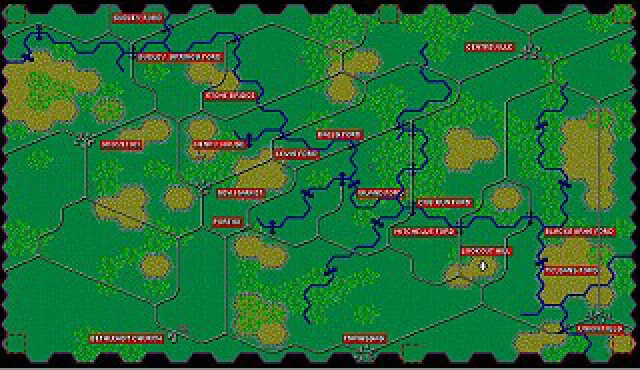
Decisive Battles of the American Civil War
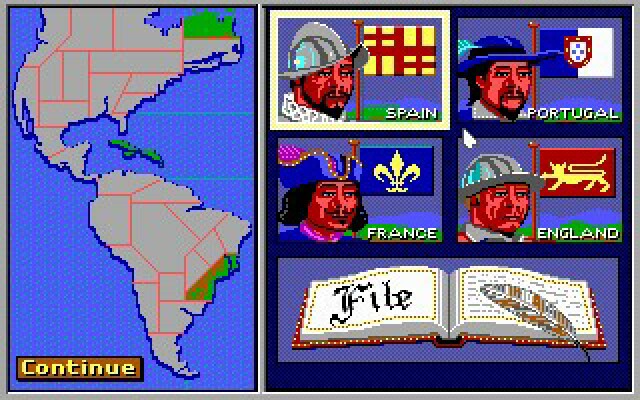
Gold of the Americas
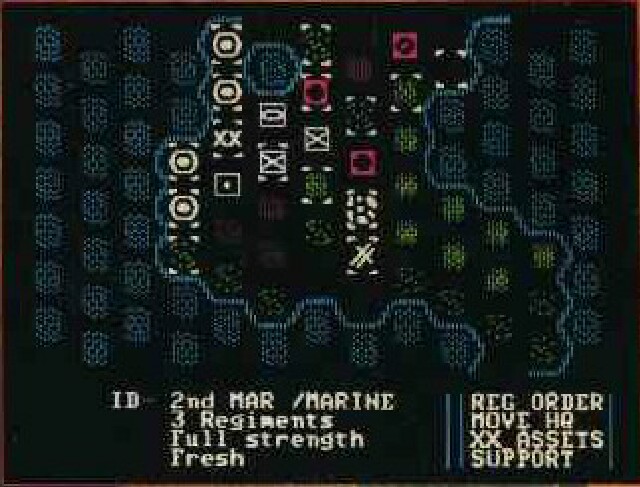
Battlefront
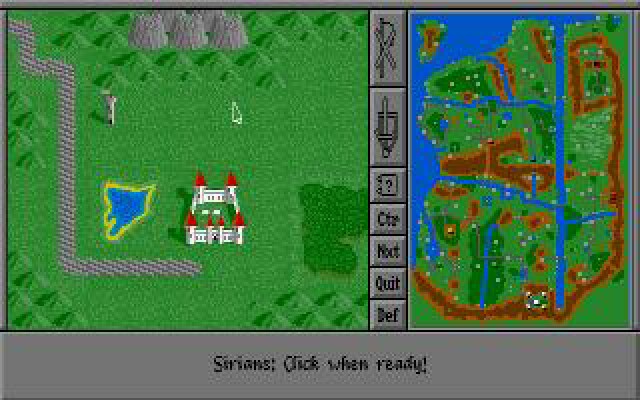
Warlords
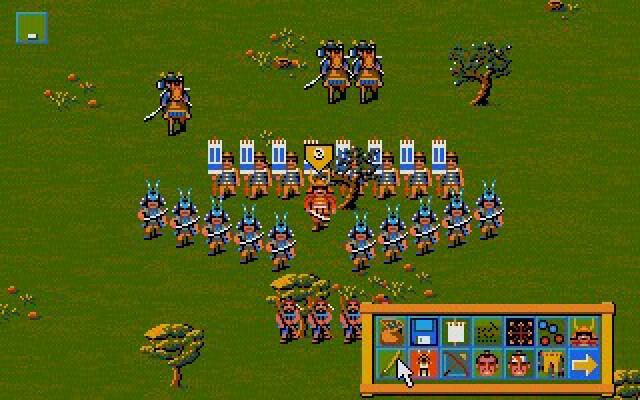
Conquest of Japan
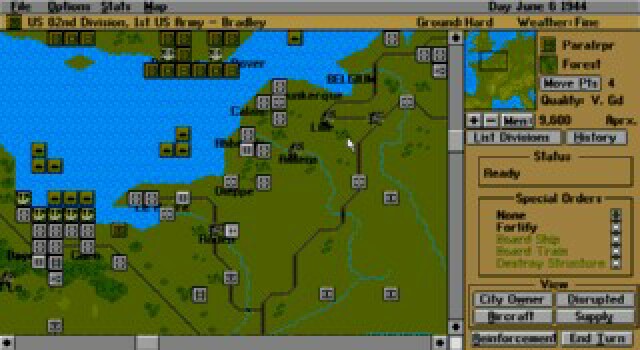
D-Day: The Beginning of the End
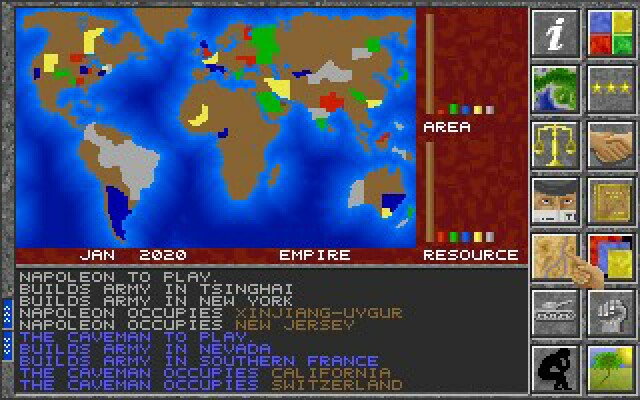
Global Domination
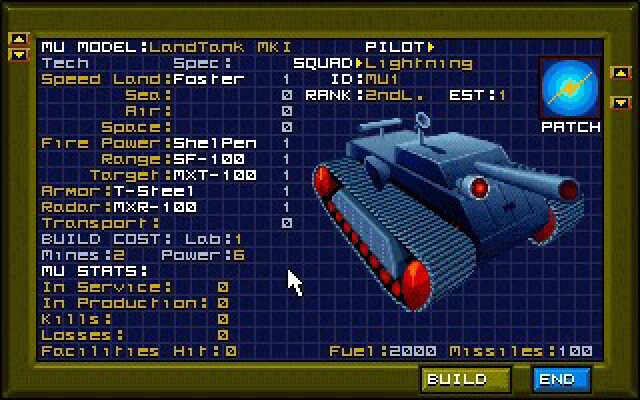
When Two Worlds War
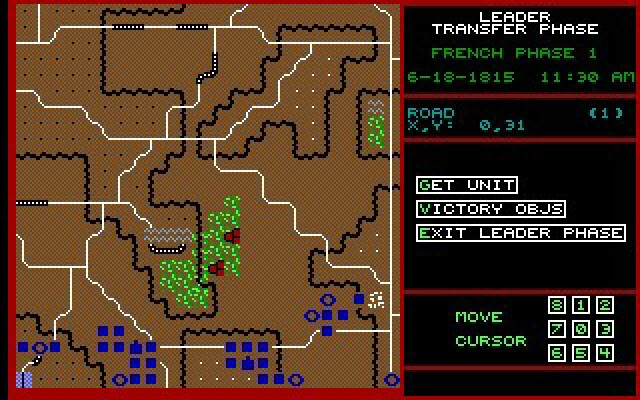
Battles of Napoleon
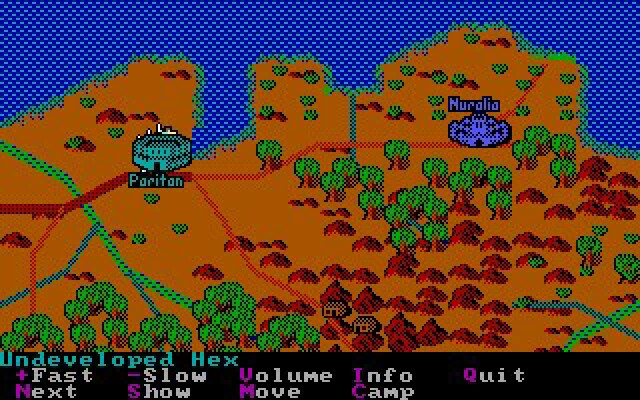
Sword of Aragon
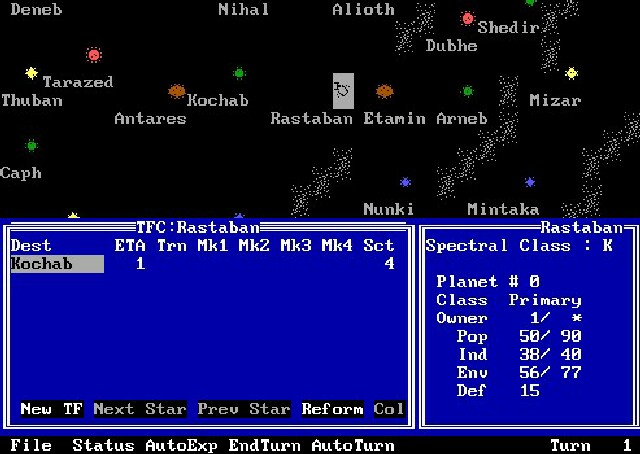
Reach for the Stars
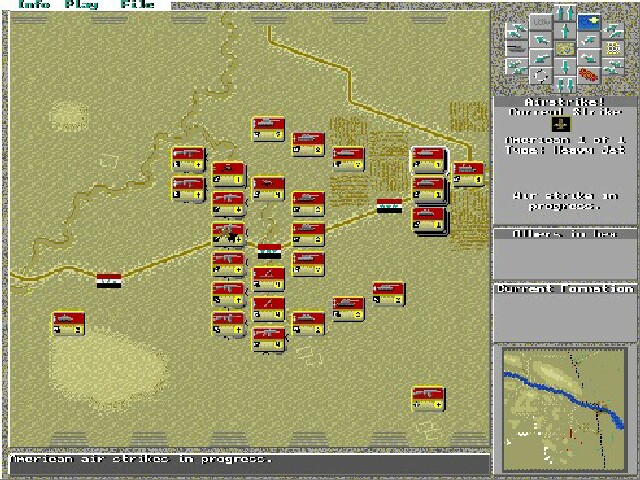
Wargame Construction Set II: Tanks




